
Categories:
Types Of Gun Magazines
Gun magazines play a significant role in the world of guns, serving as essential accessories for both professional shooters and enthusiasts alike. These devices, commonly referred to as gun magazines or simply magazines, are designed to store and feed ammunition into guns efficiently. Understanding the different types of gun magazines available is crucial for gun owners, ensuring they have the appropriate magazine for their specific needs.
Gun magazines come in various shapes, sizes, capacities, and materials. Each type has its own unique features and advantages that cater to different shooting preferences and purposes. From traditional box magazines to drum magazines and everything in between, there is a magazine suitable for almost every gun.
One of the most common types of gun magazines is the box magazine. As its name suggests, these rectangular-shaped devices have a box-like structure that houses ammunition in staggered or single-stack configurations. Box magazines are typically detachable and can be easily reloaded during shooting sessions. They are widely used in handguns such as pistols and revolvers, as well as rifles like bolt-action or semi-automatic guns.
Another popular type of gun magazine is the drum magazine. Drum magazines boast a cylindrical shape resembling a drum (hence their name) and provide significantly higher ammunition capacity compared to box magazines. These specialized high-capacity magazines are often utilized in machine guns or guns where sustained fire is required without frequent reloads.
Additionally, there are tube-fed or tubular magazines commonly found in shotguns or lever-action rifles. Tubular designs use a long tube beneath the barrel to store multiple rounds of ammunition sequentially aligned one after another.
Furthermore, advancements in technology have led to the development of innovative magazine designs such as rotary or helical-shaped variants that enhance reliability and feeding performance.
In this comprehensive guide on gun magazines, we will delve deeper into each type mentioned above while exploring their unique characteristics, applications, pros and cons—allowing gun enthusiasts to make informed decisions when selecting the right magazine for their guns.
One of the most common types of gun magazines is the detachable box magazine (DBM). DBMs are widely used in guns, ranging from handguns to rifles, due to their convenience and versatility. These magazines consist of a metal or polymer box that holds the ammunition and can be easily detached from the gun for reloading.
The design of a DBM allows for quick and efficient reloading. By simply pressing a button or lever, the magazine can be released from its housing, allowing the shooter to swiftly insert a new fully-loaded magazine. This feature is especially advantageous in situations where rapid reloading is essential, such as competitive shooting or self-defense scenarios.
DBMs come in various capacities depending on the gun they are designed for. Handguns typically have smaller capacity DBMs ranging from 8 to 20 rounds, while rifles often have larger capacity DBMs holding up to 30 rounds or even more. The higher ammunition capacity enables shooters to engage multiple targets without frequently stopping to reload.
Another benefit of DBMs is their compatibility with different calibers. Many guns with interchangeable barrels allow users to switch between various calibers simply by changing the barrel and using an appropriate DBM. This flexibility offers shooters a wide range of options based on their preferences or specific shooting requirements.
Additionally, some advanced DBMs feature special mechanisms that allow for smoother feeding of ammunition into the chamber, reducing malfunctions and enhancing overall reliability. These improvements contribute to increased accuracy and reduced downtime during shooting sessions.
Despite their advantages, it’s important to note that not all guns are compatible with detachable box magazines. Certain weapons rely on fixed magazines that cannot be easily removed without disassembling the gun itself.
In conclusion, detachable box magazines offer shooters quick reloads, varied ammunition capacities, caliber versatility, improved feeding mechanisms, and enhanced shooting experiences overall. Their widespread popularity across different types of guns makes them an essential component for many gun enthusiasts and professionals alike.
Fixed box magazines are a type of gun magazine that are permanently attached to the gun itself. Unlike detachable magazines, which can be easily removed and replaced, fixed box magazines are an integral part of the gun’s design. They have a specific capacity and cannot be altered or reloaded during operation.
One of the key advantages of fixed box magazines is their reliability. Since they are permanently affixed to the gun, there is no risk of accidentally losing or misplacing them. This makes them particularly suitable for military and law enforcement applications where consistent performance is crucial. Additionally, fixed box magazines tend to be more durable than detachable ones as they are built into the frame of the gun, reducing the chances of damage or malfunction.
Another benefit of fixed box magazines is their streamlined design. By being integrated into the gun itself, they do not protrude from its exterior like detachable magazines do. This makes it easier to maneuver and handle the weapon in tight spaces or during close-quarter combat situations. The sleek profile also reduces the risk of snagging on clothing or other objects.
However, a limitation associated with fixed box magazines is their limited ammunition capacity compared to some detachable counterparts. Since these types of magazines cannot be reloaded during operation, shooters must rely on carrying additional guns or extra ammunition in order to maintain sustained fire over extended periods.
Fixed box magazines can be found in various guns such as bolt-action rifles, lever-action rifles, and some semi-automatic pistols designed with internal magazine wells. They offer a reliable and robust feeding system while maintaining an unobtrusive appearance on the weapon itself. Despite having lower ammunition capacity compared to detachable alternatives, fixed box magazines remain a popular choice for those seeking reliable performance in various shooting scenarios.
Drum Magazines: Enhancing Firepower and Ammunition Capacity
Drum magazines, also known as rotary magazines, are a specialized type of gun magazine that offer increased ammunition capacity compared to traditional box or tubular magazines. These cylindrical-shaped magazines have a unique design that allows for the storage and feeding of a significantly higher number of rounds. Drum magazines are commonly used in various guns, including rifles and submachine guns, providing shooters with extended firepower during intense engagements.
One key advantage of drum magazines is their ability to hold a larger number of cartridges, typically ranging from 50 to 100 rounds. This increased capacity ensures sustained firing without frequent reloading, making them particularly valuable in combat scenarios or when engaging multiple targets. Their ability to provide continuous fire can prove decisive in crucial moments where quick reloading could be impractical or dangerous.
The construction of drum magazines involves a central spindle around which the cartridges are arranged. As the gun’s action cycles, the spindle rotates, positioning each round into the chamber for firing. This design allows for reliable feeding and minimizes the risk of jams or misfeeds often associated with high-capacity box magazines.
Furthermore, drum magazines offer shooters greater versatility by allowing them to switch between various types of ammunition rapidly. With different compartments within the drum housing separate rounds, shooters can load different types or calibers of ammunition simultaneously—providing adaptability based on specific tactical requirements.
Despite their advantages, drum magazines do have some drawbacks. The most notable is their size and weight compared to standard box-type counterparts. Due to their cylindrical shape and larger overall dimensions, they add bulkiness and weight to guns—making them less maneuverable and potentially hindering ease-of-use in certain situations.
In conclusion, drum magazines play an essential role in enhancing firepower and ammunition capacity for guns users who require extended periods of sustained fire without reloading interruptions. Their ability to hold an increased number of rounds combined with rapid switching between ammunition types makes them a valuable asset for military, law enforcement, and recreational shooters alike.
Rotary Magazines: A Revolution in Gun Feeding Systems
In the realm of gun magazines, one type that stands out due to its unique design and functionality is the rotary magazine. Unlike traditional box magazines that rely on a spring-loaded follower to push rounds into the chamber, rotary magazines utilize a rotating mechanism to feed ammunition into the gun. This innovative design has transformed the way guns are loaded and has become particularly popular in certain guns, such as rifles and pistols.
The primary advantage of rotary magazines lies in their increased capacity. By utilizing a circular or cylindrical shape, they can store a larger number of rounds compared to their linear counterparts. This means fewer reloads during shooting sessions, making them highly desirable for both sport shooting and self-defense purposes.
One of the most well-known examples of guns employing rotary magazines is the Ruger 10/22 rifle. This iconic rimfire rifle features a 10-round rotary magazine that seamlessly feeds ammunition into the chamber with each rotation. The smooth feeding mechanism not only ensures reliable operation but also enhances accuracy by maintaining consistent pressure on each round being chambered.
Another key benefit offered by rotary magazines is their compact design. Due to their circular shape, these magazines can be housed within a gun’s grip or stock, allowing for more streamlined and ergonomic designs overall. This integration not only improves handling but also reduces bulkiness while maintaining high ammunition capacity.
Furthermore, rotary magazines are renowned for their reliable feeding performance even under adverse conditions. The rotating mechanism ensures consistent alignment between rounds and eliminates potential feeding issues caused by misaligned cartridges or damaged springs found in traditional box magazines.
In conclusion, rotary magazines have revolutionized gun feeding systems with their increased capacity, compact design, and reliable performance. From rimfire rifles like the Ruger 10/22 to various pistols and even some shotguns, these innovative magazines continue to enhance shooting experiences for enthusiasts worldwide while setting new standards in functionality and convenience.
Tubular Magazines: A Classic Design for Guns
Tubular magazines have long been a popular choice for guns enthusiasts and hunters alike. This classic design, characterized by its cylindrical shape, has been utilized in various guns over the years. From lever-action rifles to shotguns, tubular magazines offer several advantages that make them appealing to many users.
One of the key benefits of tubular magazines is their high ammunition capacity. Unlike other magazine types, which often require detachable or external box-like structures, tubular magazines are integrated directly into the gun’s barrel or stock. This design allows for a continuous tube-like storage space that can hold multiple rounds of ammunition. Depending on the gun model and caliber, these magazines can typically accommodate anywhere from five to fifteen cartridges.
Another advantage of tubular magazines is their ease of reloading. With a simple push or slide mechanism, users can conveniently feed additional rounds into the magazine without removing it from the gun. This feature is particularly advantageous in fast-paced shooting scenarios or when hunting game that requires quick follow-up shots.
Furthermore, tubular magazines offer improved weight distribution compared to other types of gun magazines. By integrating the magazine within the gun itself, manufacturers can achieve better balance and handling characteristics while reducing overall weight. This becomes particularly noticeable in lever-action rifles where a tubular magazine running parallel to the barrel ensures enhanced stability during rapid cycling.
However, like any design choice, tubular magazines also have limitations worth considering. One significant drawback is their slower reloading process compared to detachable box-style magazines commonly found in semi-automatic guns. Reloading a tubular magazine requires manually inserting each round one by one into the tube until fully loaded – a time-consuming task when compared to simply swapping out empty box-style magazines with pre-loaded ones.
In conclusion, tubular magazines continue to be an enduring and sought-after feature in guns due to their high ammunition capacity, ease of reloading during intense shooting situations, and improved weight distribution. While they may not be the ideal choice for every shooter or scenario, their classic design and functionality have cemented their place in the world of guns.
Stripper clip-fed magazines are a type of gun magazine that utilizes stripper clips to rapidly load ammunition into the gun. This feeding mechanism is commonly found in military rifles and has been used extensively throughout history.
The stripper clip, a metal or plastic device, is designed to hold multiple rounds of ammunition in a single unit. It features a series of tabs that securely hold the cartridges in place. The clip is inserted into the magazine, and with one swift motion, the shooter can quickly load multiple rounds into the gun’s chamber.
One of the key advantages of stripper clip-fed magazines is their ability to facilitate rapid reloading during combat situations. Soldiers can carry several loaded stripper clips in their gear, allowing them to reload swiftly and efficiently without wasting precious time individually inserting rounds into the magazine.
Another advantage of this feeding system is that it eliminates the need for loose rounds or speed loaders while maintaining a relatively low profile compared to other types of magazines. This makes it easier for soldiers on foot or in confined spaces, such as vehicles or trenches, to carry and reload their guns without hindrance.
Furthermore, stripper clip-fed magazines often have higher round capacities compared to other types of magazines due to their efficient design. This can be particularly beneficial in combat scenarios where sustained fire may be required.
It’s worth noting that while stripper clips are primarily associated with military rifles such as the M1 Garand or AK-47, some modern civilian guns also incorporate this loading mechanism. This allows civilian shooters interested in historical guns or those looking for an alternative loading method to experience the unique characteristics offered by stripper clip-fed systems.
In conclusion, stripper clip-fed magazines have played an integral role in military gun designs throughout history. Their ability to rapidly load ammunition and provide efficient reloading capabilities has made them a staple among soldiers worldwide. Additionally, they offer advantages such as increased round capacity and ease of use in various combat scenarios while maintaining a relatively low-profile design.
Extended capacity magazines, also known as high-capacity or large-capacity magazines, are gun accessories designed to increase the ammunition capacity of a gun beyond its standard magazine capacity. These magazines are a popular choice among gun enthusiasts and professionals who require a larger number of rounds without having to reload frequently. In this subtopic, we will explore the features and benefits of extended capacity magazines.
One key feature of extended capacity magazines is their increased round count. While standard gun magazines typically hold around 10-15 rounds, extended capacity magazines can hold anywhere from 20 to 100+ rounds depending on the gun and specific magazine design. This significantly reduces the need for reloading during critical situations such as self-defense or in tactical environments.
Another advantage of extended capacity magazines is their ability to provide sustained fire during defensive scenarios or competitions. By allowing shooters to fire more rounds before reloading, these magazines offer an advantage in situations where accuracy and speed are crucial factors.
Furthermore, extended capacity magazines can enhance training sessions by reducing downtime between reloads. In shooting competitions or training exercises, shooters can focus more on improving their skills rather than constantly reloading their guns.
It is important to note that while extended capacity magazines offer certain advantages, they have also been subject to controversy due to concerns over public safety. Critics argue that these high-capacity magazines increase the potential for mass shootings or criminal activity since they allow shooters to fire multiple rounds without interruption.
In response to these concerns, some jurisdictions have implemented restrictions on the sale or possession of extended capacity magazines. These regulations aim to balance individual rights with public safety considerations.
In conclusion, extended capacity magazines provide gun owners with increased ammunition capacities that can be beneficial in various situations such as self-defense and competitive shooting events. However, it is essential for individuals to understand local laws and regulations regarding these accessories before purchasing or using them responsibly.
In conclusion, understanding the various types of gun magazines is crucial for any gun enthusiast or responsible gun owner. The selection of the appropriate magazine can significantly impact a shooter’s experience, efficiency, and overall performance. By considering factors such as capacity, reliability, compatibility, ease of use, and intended purpose, one can make informed decisions when choosing a magazine for their gun.
Firstly, capacity plays a vital role in determining the number of rounds a magazine can hold. High-capacity magazines are favored by many shooters for their ability to provide extended shooting sessions without frequent reloading. However, it is important to note that local laws and regulations may impose restrictions on magazine capacities in certain regions.
Reliability is another essential consideration when selecting a gun magazine. A reliable magazine ensures consistent feeding of ammunition into the gun without malfunctions or misfires. It is advisable to opt for magazines from reputable manufacturers with a track record of producing durable and dependable products.
Compatibility between the gun and magazine is also crucial. Not all magazines are compatible with every gun model or caliber. Therefore, it is imperative to ensure that the chosen magazine fits securely and functions correctly within the specific gun.
Ease of use should not be overlooked when deciding on a gun magazine. Features such as ergonomic design elements, easy loading mechanisms, efficient follower systems (which push rounds up into position), and simple disassembly for cleaning contribute to an enjoyable shooting experience.
Lastly, it is essential to consider the intended purpose of your gun when selecting a magazine type. Different shooting disciplines or self-defense scenarios may require specific features like quick reloads or compactness.
In conclusion, evaluating factors such as capacity, reliability, compatibility, ease of use, and intended purpose will assist in making an informed decision about which type of gun magazine best suits your needs. Remember that safety should always be paramount when handling guns; thus ensuring proper training and adherence to local laws should accompany any gun purchase.
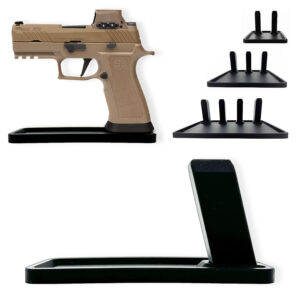

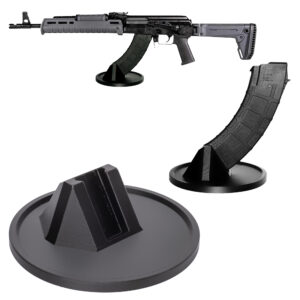
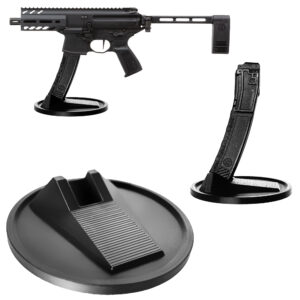
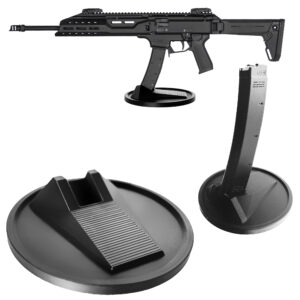


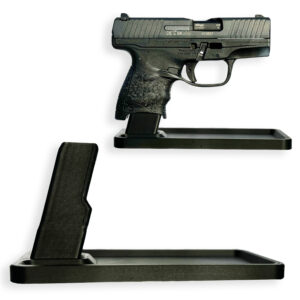
Colt
Colt M4 Carbine
Colt LE6920
Colt AR-15 A4
Daniel Defense
DDM4 V7
DDM4 V9
DDM4 V11
DDM4 ISR (Integrally Suppressed Rifle)
Smith & Wesson (S&W)
M&P15 Sport II
M&P15 Tactical
M&P15T
Bravo Company Manufacturing (BCM)
BCM Recce-16
BCM Recce-14
BCM MCMR Series
Aero Precision
M4E1 Series
AC-15
AR15 Pistol (Various Configurations)
Ruger
Ruger AR-556
Ruger SR-556
Ruger AR-556 MPR (Multi-Purpose Rifle)
Springfield Armory
Saint Victor
Saint Edge
Saint AR-15
PSA (Palmetto State Armory)
PSA PA-15
PSA AR-V
PSA Jakl (AR Pistol)
FN America
FN 15 Tactical Carbine
FN 15 Patrol
FN 15 DMR
Wilson Combat
Recon Tactical
Super Sniper
Protector Carbine
SIG Sauer
SIG M400 Tread
SIG M400 Elite
SIG M400 SDI
LWRC International
IC DI (Direct Impingement)
IC SPR
IC A5
Bushmaster Guns
XM-15 QRC
Bushmaster MOE
XM-15 Patrolman
Rock River Arms
LAR-15 Entry Tactical
LAR-15 Predator
LAR-15 Elite Comp
Stag Arms
Stag 15 Tactical
Stag 15L (Left-Handed Models)
Stag 15 Valkyrie
Noveske Rifleworks
Noveske Gen 4 N4
Noveske Space Invader (AR Pistol)
Noveske Recon
Anderson Manufacturing
AM-15 Optic Ready
AM-15 M4 Carbine
AM-15 Precision Rifle
Adams Arms
AA-15 Piston Rifle
P2 AARS (Adams Arms Rifle Series)
Black Rain Ordnance
SPEC15 Series
BRO Predator
Fallout 15
Diamondback Guns
DB15 Series
DB15CCMLB
DB15EB
Del-Ton Inc.
DTI-15
Del-Ton Echo 316H
Sierra 316M
Windham Weaponry
Windham SRC
Windham VEX-SS
Windham RMCS-4 (Caliber Conversion System)
Christensen Arms
CA-15 G2
CA-15 Recon
CA-15 Titanium Edition
Patriot Ordnance Factory (POF-USA)
Renegade Plus
P415 Edge
Revolution DI
LaRue Tactical
PredatAR
OBR (Optimized Battle Rifle)
LaRue Stealth 2.0
Battle Arms Development
Workhorse Patrol Carbine
BAD556-LW (Lightweight)
Authority Elite Rifle
Faxon Guns
Ascent AR-15
FX-19 (AR Pistol)
Streamline Ultralight Series
KE Arms
KE-15 SLT (Super Lightweight Tactical)
KE-15 Scout Carbine
Primary Weapons Systems (PWS)
MK1 MOD 2-M
MK116 PRO
MK107 (Piston AR Pistol)
ZEV Technologies
ZEV Core Elite Rifle
ZEV AR15 Billet Rifles
Franklin Armory
BFSIII AR-C1
Militia Model
F17-L (Chambered in .17 WSM)
Seekins Precision
SP15 DMR
NX15 Skeletonized Rifle
Havak Bravo
Aero Precision (Additional Models)
EPC-9 (Pistol Caliber ARs)
VG6 AR Rifles
Barrett Guns
REC7 DI
REC7 Gen II
CMMG
MK4 RCE
Resolute 300
Banshee (AR Pistol)
DPMS Panther Arms
Panther Oracle
Panther LR-308
H&K (Heckler & Koch)
HK MR556A1
HK416 (Military Variant)
Rock Island Armory (Armscor)
VR-80 Tactical AR (Shotgun AR Platform)
Troy Industries
Troy SPC-A3
Troy PAR (Pump Action AR)
Wilson Tactical
Tactical Recon AR
Protector Series
F1 Guns
FDR-15 Skeletonized Rifle
BDRx-15 Series
Juggernaut Tactical
JT-15
JT-10 Precision Rifle
AeroSurplus
Surplus AR-15 Rifles (Budget Models)
Thunder Tactical
AR-15 Basic Carbine
Tactical Builder Sets
Radical Guns
RF-15
Forged AR-Series
Dark Storm Industries
DS-15 Featureless Rifles
DS-10 Typhoon
DRD Tactical
Paratus
Aptus AR Rifles
Bear Creek Arsenal
BCA-15
AR Complete Upper Builds
Aero Survival Rifles (ASI)
ASR Tactical Series
Tactical Edge
WARFIGHTER Series
AR-15 Lightweight Rifles
Lone Star Armory
TX15 DMR
TX15 Carbine
HERA Arms
HERA H7
HERA AR-15 Lower Builds
IWI (Israeli Weapon Industries)
Zion-15
DRD Tactical
Tactical Modular Rifles
Quick-Takedown Rifles
V Seven Weapons
1776 Rifle
Hyperlite Rifle
Core Rifle Systems
Core15 Tac III
Core15 Patrol Rifle
Armalite (Original AR-15 Creator)
M15 Tactical
M15 A4 Carbine
DEF15 (Defensive Sporting Rifle Series)
PSA (Palmetto State Armory Additional Models)
PSAK-47 Hybrid (AR-AK Style Hybrid)
PSA Dagger (Pistol Caliber Configurations)
Odin Works
OTR-15
Odin Recon Rifle
Maxim Defense
MDX-508 PDX (Compact AR Pistol)
MDX-510 Rifle